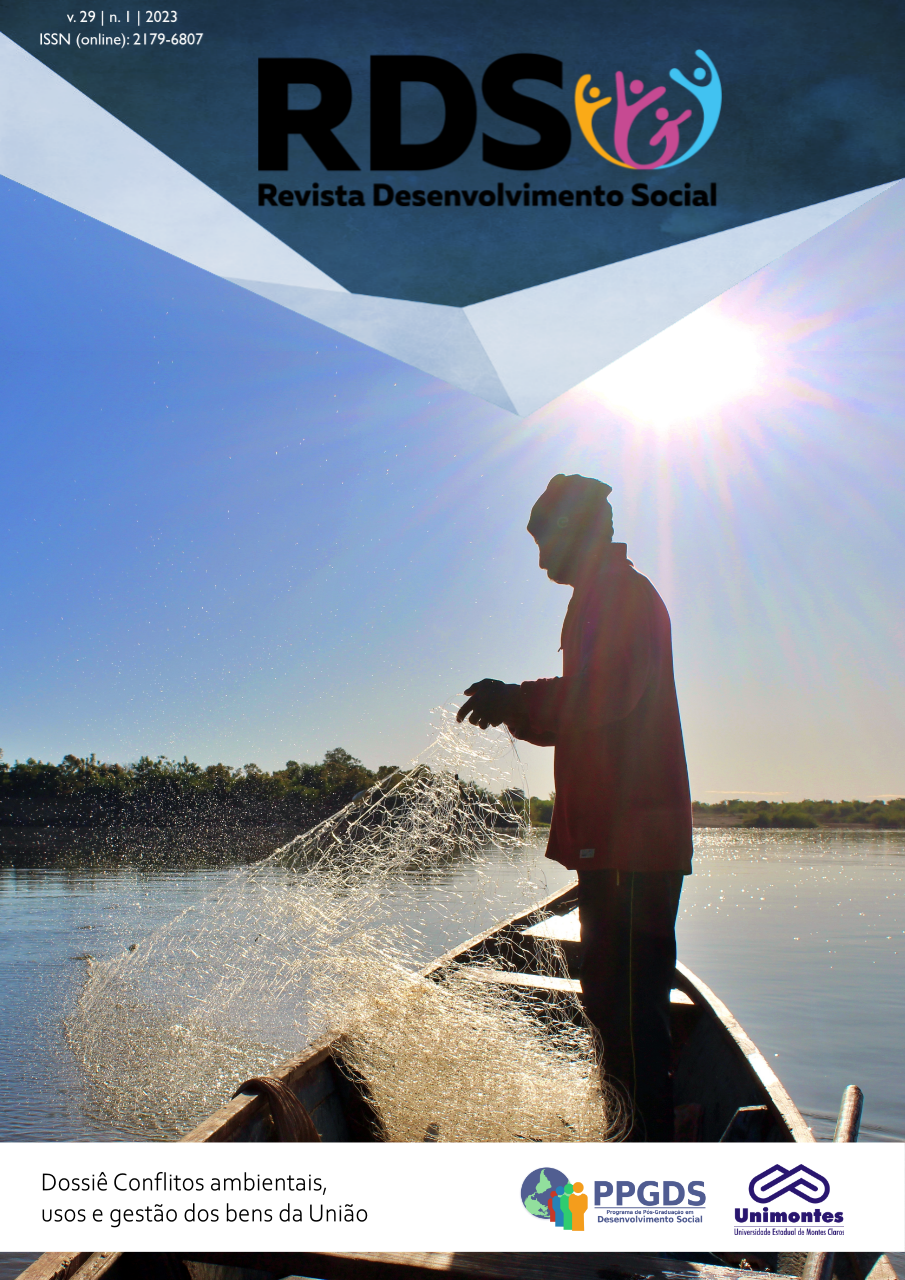Xavante indigenous Community of village Tsorempré: Management of resources and use of ecosystem services
Xavante indigenous Community of village Tsorempré: Management of resources and use of ecosystem services
DOI:
10.46551/issn2179-6807v29n1p154-173Keywords:
Ecosystem services, Xavante, Resource managementAbstract
This article deals with the management of natural and produced resources in the Tsorempré village, indigenous land Sangradouro-Volta Grande, in the municipalities of General Carneiro, Novo São Joaquim and Poxoréu, state of Mato Grosso. In order to collect and understand data related to ecosystem services carried out by the indigenous people and guarantee the assertiveness of the observations made during the experiences in the village, thematic questionnaires were developed and applied, divided by categories. This research has an ethnographic and qualitative character, without the purpose of quantifying the investigated aspects. According to the observations made in the field, it was possible to verify that the population of the Tsorempré village uses ecosystem services (natural resources), mainly for food and for maintenance of the culture. Much of the food consumed in the village comes from ecosystem services. The Xavante people are gatherers and hunters; gathering is the responsibility of women and hunting is the responsibility of men. In the relationship between production, purchase and sale, there is a complex practice where what is produced involves climatic conditions and, especially, the Xavante culture. What is sold considers, mainly, the needs of the indigenous people, with prices being established in the background, without considering the market. Thus, other ways in which human beings relate to each other, with nature, and with consumption can be seen.
Downloads
References
BAVARESCO, A.; MENEZES, M. Entendendo a PNGATI: Política Nacional de Gestão Territorial e Ambiental Indígenas. Brasília: GIZ/Projeto GATI/Funai, 2014.
BEGOTTI, R. A.; PERES, C. A. Rapidly escalating threats to the biodiversity and ethnocultural capital of Brazilian Indigenous Lands. Land Use Policy, 96, 2020.
BRAAT, L. C.; GROOT. The Ecosystem Services Agenda: Bridging the Worlds of Natural Science and Economics, Conservation and Development, and Public and Private Policy. Ecosystem Services, 2012.
BRASIL. Censo demográfico. Síntese Municipal. Elaboração: Fundação João Pinheiro (FJP). Centro de Estudos Políticos e Sociais, 1991.
BRITO, A L C.; BARBOSA, E M. A gestão ambiental das terras indígenas e de seus recursos naturais: fundamentos jurídicos, limites e desafios. Veredas do Direito, Belo Horizonte, 2015.
CUNHA, M. C. História dos índios no Brasil. São Paulo: Companhia das Letras, Secretaria Municipal de Cultura, FAPESP, 1992, p. 9-24
FUNAI. Coordenação Geral De Gestão Ambiental. (Org.). Plano de Gestão Territorial e Ambiental de Terras Indígenas: Orientações para Elaboração. – Brasília: FUNAI, 2013.
FUNAI. PNGATI: Plano Integrado de Implementação da Política Nacional de Gestão Territorial e Ambiental de Terras Indígenas. – Brasília: Projeto GATI/Funai, 2016.
GOMIDE, M. L. C.; KAWAKUBO, F. S. Povos indígenas do cerrado, territórios ameaçados: Terras Indígenas Xavante de Sangradouro/Volta Grande e São Marcos. Agrária, São Paulo, 3, 2006, p. 16-46.
KAWAKUBO, F.S et al. Caracterização empírica da fragilidade ambiental utilizando geoprocessamento. In.: Anais do XII Simpósio Brasileiro de Sensoriamento Remoto. Goiânia: INPE, 2004, p. 2203-2210.
LAROQUE, L. F.S.; PRESTES, F. O Saber Sensível do Kujà sobre Ambiente e Saúde: Um Estudo de Caso da Comunidade Indígena Foxá de Lajeado/RS. Fronteiras: Journal of Social, Technological and Environmental Science, 7(3), 2018, p. 342-356. doi: http://periodicos.unievangelica.edu.br/index.php/fronteiras/article/view/2777
LIMA, A. C. S. Nas trilhas das universidades: os índios no Brasil contemporâneo. In: BRASIL. O Índio Brasileiro: o que você precisa saber sobre os povos indígenas no Brasil de hoje. Brasília: Ministério da Educação, Secretaria de Educação Continuada, Alfabetização e Diversidade; LACED/Museu Nacional, 2006.
MACHADO, M. C. Mapeamento cultural e gestão territorial de terras indígenas: o uso dos etnomapas. Brasília, 2014.
MEA. Millennium Ecosystem Assessment. Ecosystems and Human Well-Being: Synthesis. Washington, Island Press, 2005.
OLIVEIRA, C. L. Um apanhado teórico-conceitual sobre a pesquisa qualitativa: tipos, técnicas e características. Revista Travessias. Pesquisa em educação, cultura, linguagem e arte, 2008, 2(3).
SANTOS, R. V; FLOWERS, N.; COIMBRA JR. C. E. A.; GUGELMIN, S. A. Tapirs, tractors, and tapes: The changing economy and ecology of the Xavánte Indians of Central Brazil. Human Ecology, 1997.
SOUZA, L. G.; SANTOS, R. V. Perfil demográfico da população indígena Xavánte de Sangradouro-Volta Grande, Mato Grosso, Brasil (1993-1997). Cadernos de Saúde Pública, 2001.
Published
How to Cite
Issue
Section
License
Copyright (c) 2023 João Gomes Júnior, Odorico Ferreira Cardoso Neto

This work is licensed under a Creative Commons Attribution-NonCommercial-NoDerivatives 4.0 International License.
Esta licença permite que outros(as) façam download do trabalho e o compartilhe desde que atribuam crédito ao autor(a), mas sem que possam alterá-lo de nenhuma forma ou utilizá-lo para fins comerciais.












.png)
.png)




.png)









